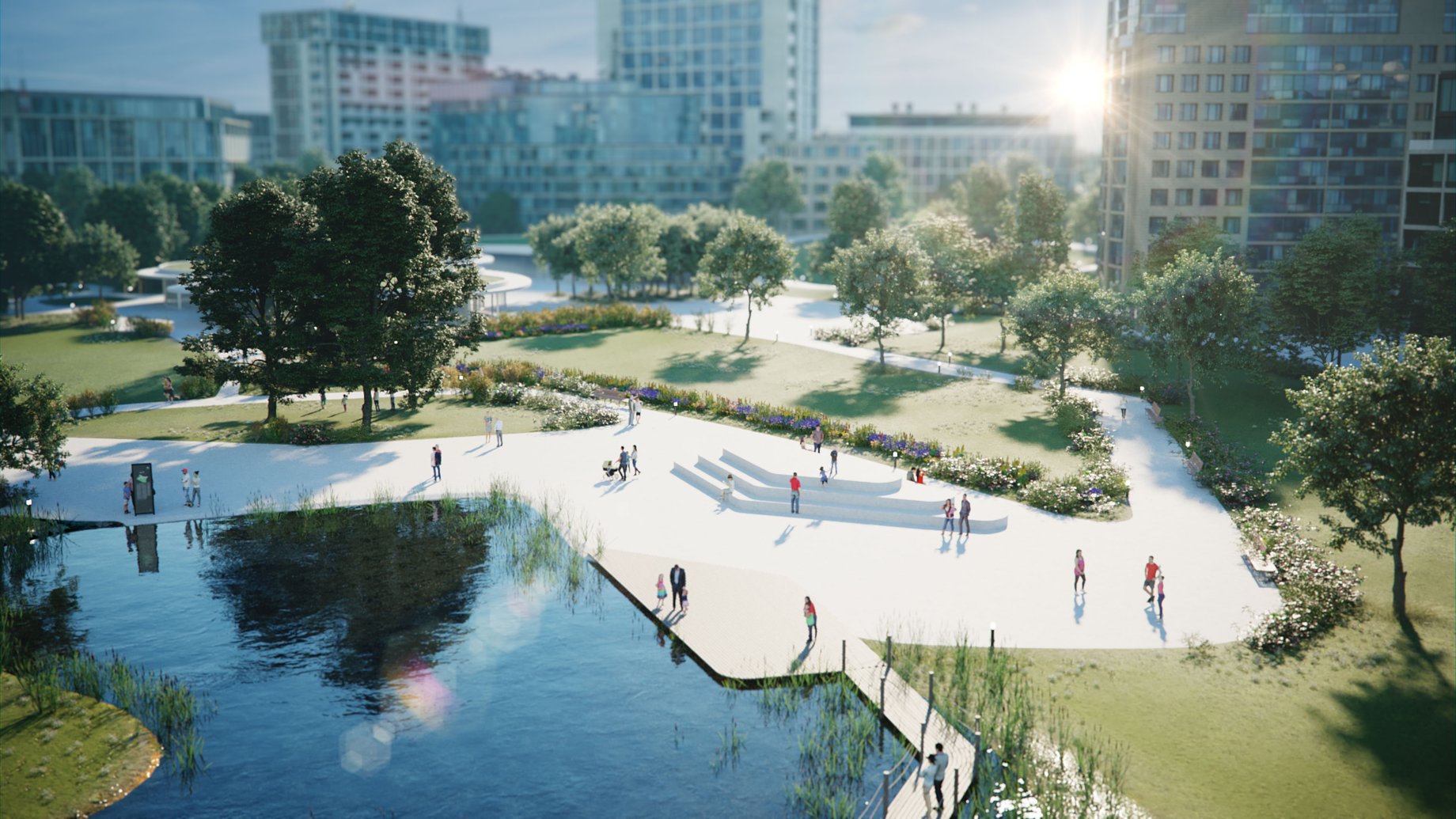
Microclimate modeling refers to the simulation and analysis of the climate within a small, localized area — often just a few meters to a kilometer in size. Unlike broader climate assessments that cover large regions (such as macroclimates), microclimate models focus on understanding how localized environmental conditions like vegetation, surface materials, and building structures affect weather and temperature patterns in specific spaces. This is especially important in urban areas, where varying land use and human-made structures can create dramatically different climate zones within short distances.
What is a microclimate?
Urban heat island effect
One of the most significant challenges in urban microclimate modeling is addressing the urban heat island (UHI) effect. The urban heat island effect occurs when cities experience significantly higher temperatures than nearby rural areas. Larger urban centers often face more intense heat stress, with areas like London and Paris typically recording nighttime temperatures around 4°C higher than nearby rural regions.
This phenomenon happens because urban surfaces like concrete and asphalt absorb and store heat during the day, releasing it slowly at night. Buildings and roads also trap heat, creating localized warm zones that contribute to higher energy use and discomfort for residents. Microclimate models help simulate these effects, offering insights into how design choices — such as adding green spaces or using lighter, reflective materials — can help reduce the urban heat island effect.
Factors influencing microclimates
Several factors shape the microclimate of a specific area. In cities, these factors become even more critical due to the urban heat island effect:
- Surface materials: Dark materials like asphalt and concrete absorb heat and contribute to warming, while lighter-colored or reflective materials help reduce temperature buildup in urban areas.
- Vegetation: Trees, shrubs, and plants cool the surrounding air through transpiration, providing natural shade and lowering local temperatures. Incorporating vegetation into urban design helps reduce the severity of urban heat islands.
- Water bodies: Lakes, rivers, and ponds absorb heat during the day and release it at night, moderating temperature fluctuations and contributing to a cooler microclimate.
- Buildings: Urban structures influence wind flow and shade, impacting how heat is distributed and retained. Tall buildings can trap heat, creating localized warm areas that contribute to higher temperatures within a city.

Image source: IPCC
Why microclimate modeling matters
Microclimate modeling plays a critical role in sustainable urban planning, particularly as cities tackle rising temperatures and the growing urban heat island effect. Simulating microclimates allows professionals to predict how various design choices — such as material selection, landscaping, and building orientation — will influence local temperatures and air quality.
With urbanization accelerating and global temperatures rising, the ability to model and improve microclimates is crucial for creating more livable cities. In particular, microclimate models can help reduce the urban heat island effect, which can make city centers up to 10°C warmer than surrounding rural areas. Mitigating these temperature increases can reduce the energy needed for air conditioning and improve residents' overall quality of life.
Free One Click LCA Academy course: Advanced 3D microclimate modeling with ENVI-met
Business and regulatory impact of microclimate modeling
Microclimate modeling benefits multiple stakeholders across urban development:
- Cities: Municipalities use microclimate modeling to create comfortable and livable outdoor spaces, even during hot summer months. This enhances public spaces, improves sustainability, and helps reduce the urban heat island effect.
- Developers: Property developers can use microclimate models to optimize outdoor environments and increase property values by creating more climate-resilient designs that appeal to tenants and customers.
- Architects: For architects, microclimate modeling helps integrate sustainable design elements like vegetation, shading, and reflective materials, improving the comfort and energy efficiency of buildings.
- Consultants: Consultants can leverage microclimate models to offer expert guidance on climate-adaptive design strategies, differentiating themselves in a competitive market.
As regulatory frameworks evolve, microclimate considerations are becoming part of urban development standards. Cities such as London have introduced regulations aimed at mitigating the urban heat island effect, while global initiatives like the COP28 Global Cooling Pledge encourage passive cooling solutions, including vegetation and shading, to reduce reliance on energy-intensive cooling systems.
ENVI-met and microclimate modeling
ENVI-met is a specialized tool for microclimate modeling, designed to simulate the interactions between surfaces, vegetation, and the atmosphere in urban environments. It allows users to input data on geographic location, meteorological conditions, and building structures to model how different factors influence local microclimates. This capability is essential for architects, planners, and developers looking to reduce the urban heat island effect and create more climate-resilient cities.
Microclimate modeling is an essential practice for future-proofing cities and making them more resilient to the impacts of climate change. With tools like ENVI-met, designers can create spaces that not only reduce the effects of the urban heat island but also improve energy efficiency and quality of life for residents.
Carbon Experts Newsletter
Industry news & insights — straight to your inbox
Want to learn more?
Asha Ramachandran • Mar 10 2025
Asha Ramachandran • May 02 2025
Roberta Belanova • Nov 11 2024
Asha Ramachandran • Oct 31 2025
.png?width=793&height=476&name=urban-healt-island-effect-1%20(1).png)
